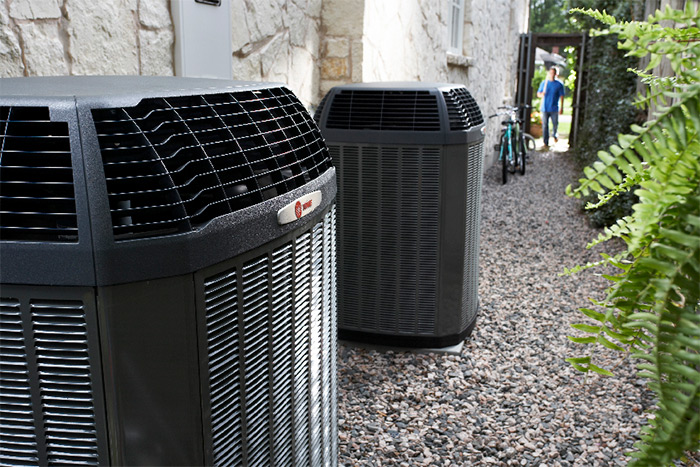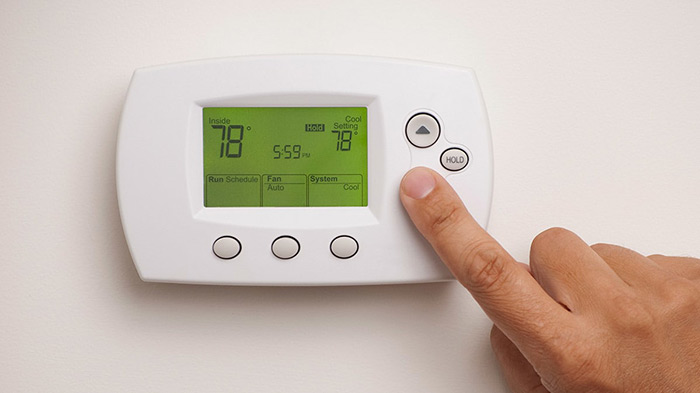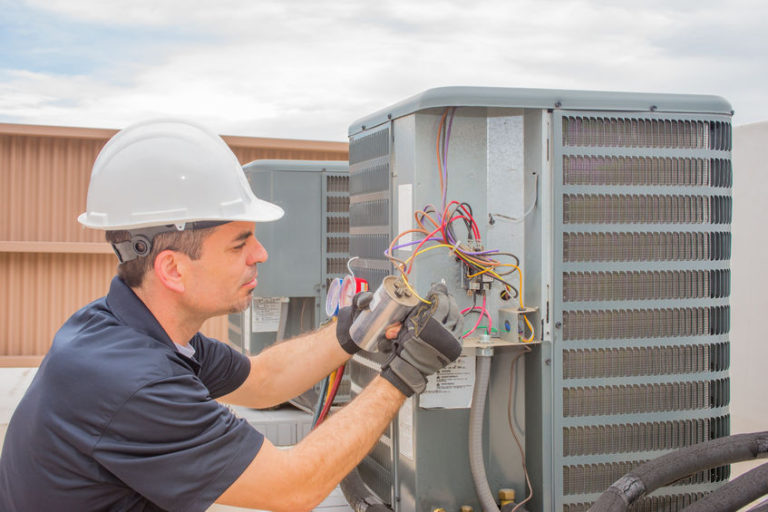Attic furnaces are frequently installed in residential and commercial structures throughout New Jersey. Furnaces are often put in basements in residential and commercial buildings, however transferring your furnace to your attic or having a furnace installed in your attic can provide convenience and safety. There are several reasons why installing a furnace in the attic is preferable.
View Our HVAC Services | Learn About All Air Systems
Servicing an attic furnace in NJ may be more difficult due to the cramped quarters of most attics. Attic furnaces might be more difficult to service than basement furnaces. Attics are smaller than basements. The benefits may outweigh the annual filter replacement or the few times when servicing is required. Aside from dealing with the cramped conditions for furnace maintenance, there are other advantages to using an attic furnace, one of which is convenience.
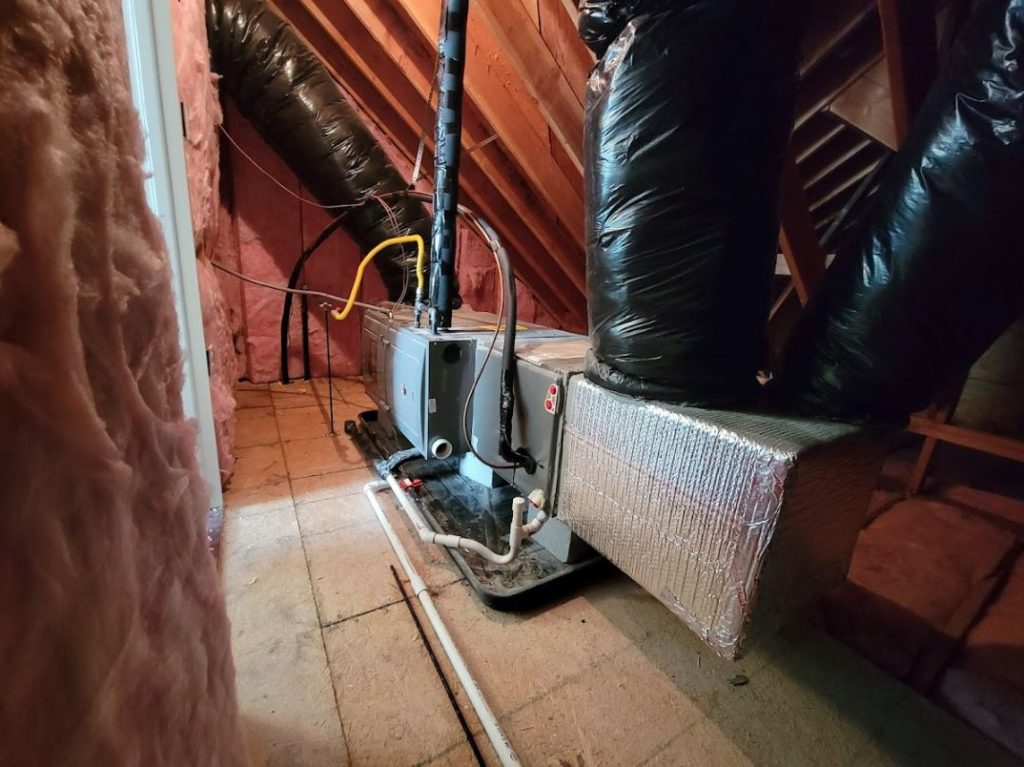
Call 732-888-0952 or Contact Us for a Free Heating and Cooling Quote in
Monmouth and Ocean County, New Jersey!
An ideal attic furnace would have its own insulated utility room with sufficient space to service it, providing year-round protection from temperature variations.
Installing or transferring a furnace to your attic should only be done if you have procedures in place to detect any problems and adequate ventilation in the space. Installing a gas heater in your attic is just as simple as installing an electric furnace; just make sure your alarm systems are working properly so you can detect any leaks fast. Because your furnace is in the attic, it is hidden from view, thus minor problems will go unnoticed.
Furnace in the Attic: The Pros and Cons
Pros and Benefits of Attic Furnaces
Installation is straightforward: HVAC companies install a wide range of furnaces to meet all types of homes and living areas. Every customer or client won’t necessarily have a basement, garage, or functioning closet – in these cases, attic furnaces are a logical and necessary innovation.
Modern furnace designs allow you to put them either vertically or horizontally in homes and living spaces with attics. Horizontal attic furnaces are becoming more popular since they can be mounted on a wall or in the rafters and are simple to install, especially if you have enough room.
Less Noise:
If the noise of a properly functioning furnace would be distracting to the homeowner, the attic is a fantastic place to consider installation if you’re looking for peace and quiet.
Shorter Ducts:
A multi-level home’s upper stories are closer to an attic furnace. It will not require as much pipe as a basement furnace to supply heat to the rooms. Because heat is lost through leakage in air ducts, shorter lengths are more efficient. Because of the greater proximity, attic furnaces can use shorter lengths of air duct
Cost of Installation:
Because of its location, an attic furnace can be ventilated outside much more readily. You’ll need less ductwork to vent the furnace here than in other rooms of the house. Because less ductwork is required, you may save money on furnace installation.
A Second Furnace for Zoned Heating:
If a home is being remodeled or a second level is being added, a second furnace may be required to heat a home. An expanded home, or one with additional floors can have an attic furnace installed which would be closer to the new levels. During construction, the new furnace can be installed in the attic, with easy access for the homeowner and air ducts that are optimized for efficiently providing heat to the new regions.

Attic Furnaces Save Space:
Typically, attics are kept unoccupied and homeowners have little to no use of the area. Apart from some stored belongings, there’s normally nothing in an attic, so a furnace won’t take up much room. The room may be too small to be usable living space, but it could be just the right size for an attic furnace. If your furnace is currently positioned in a basement or garage, moving it to the attic could help free up space. You’ll also free up some space in your closet. If the closet is next to one of the bathrooms (as it typically is), you have a great opportunity to remodel.
Basements have been used to store vegetables, canned goods, and household surplus. Sometimes a home’s basement features entertainment areas with bars and pool tables, home theatre rooms, bathrooms, bedrooms, and play areas. In this way, they become an extension of the living space in the home. It makes sense to install a furnace in the attic since it frees up space for more family activities. Furnaces may even be located on the main level in places with high water tables, using considerable valuable space. Placing them in the attic frees up crucial living space on the main floor.
Flooding is Less of a Threat:
If your furnace is currently located in your basement and your basement floods, your furnace may be damaged. For your safety, a water-damaged furnace may need to be replaced. Whatever caused the flooding, having a furnace at ground level or below presents a dangerous situation.
An attic furnace, or any furnace that is located above ground level, is less likely to flood. Installing a heater in the attic provides safety in flood-prone locations. Even when furnaces are installed on the main floor, floodwaters frequently overflow the first floor, severely damaging the equipment. Most floods can be avoided by simply putting the furnace in the attic space of a single-story home.
Attic Furnace Cons and Possible Drawbacks
Can Reduce Efficiency: If a furnace is installed in an attic, it can lose efficiency. Heat rises, which is something to keep in mind while using an attic furnace. When your furnace is in the attic, it must send warm/hot air down to the lower floors of your home. Warm/hot air is allowed to ascend naturally with a furnace in the basement, which is more energy efficient.
Out of Sight, Out of Mind: When a furnace or other hvac equipment isn’t working properly, the warning indicators are often obvious. If you hear odd and/or squeaky noises emanating from your furnace, it may be a warning that it is currently malfunctioning or will soon fail. You might not be able to hear the apparent warning indications that there’s a problem if you have an attic furnace.
If you don’t realize you have a problem until your system has failed it may be because you didn’t perform a few furnace maintenance checks throughout the year. Keep in mind that if you install an attic furnace, regular preventative maintenance is crucial to keep the equipment running reliably throughout the year.
You’ll Have More Holes In Your Ceiling:
Because warm air rises, an attic furnace necessitates more ceiling duct openings to force the warm air down and around the house and maintain a suitable temperature.
Potential Ductwork Issues:
Your attic is one of the warmest places in your house during the summer. During the summer, attics can become exceedingly hot. This might result in pinhole leaks and minor tears in the furnace ductwork. If you discover your cooling power has decreased while running the air conditioner, it could be a symptom of leaky duct work. The heat from here can produce extremely small tears/holes in furnace ducting. This potential ducting issue is more evident when using your air conditioning because you aren’t running your heat in the summer. If you notice a reduction in cooling power, it could be due to microscopic holes in your ducting created by high temperatures.
How Much Does An Attic Furnace Cost?
The price of an attic furnace will vary depending on the type of furnace that is best for your space. Every home will have various requirements that make installing a furnace in your attic both efficient and functional, whether you pick horizontal or vertical, gas or electric. Costs will also vary depending on the conditioning of the environment where the furnace is installed. If the attic is well insulated, operation costs will be lower than in a poorly insulated space.
If you’re thinking about installing a heater in your attic, a high-efficiency model is an excellent choice. By attempting to move heat against its natural direction throughout the house, a high efficiency furnace in your attic can assist balance any declines detected. High-efficiency furnaces use less energy than ordinary furnaces, but they might cost up to twice as much to operate.
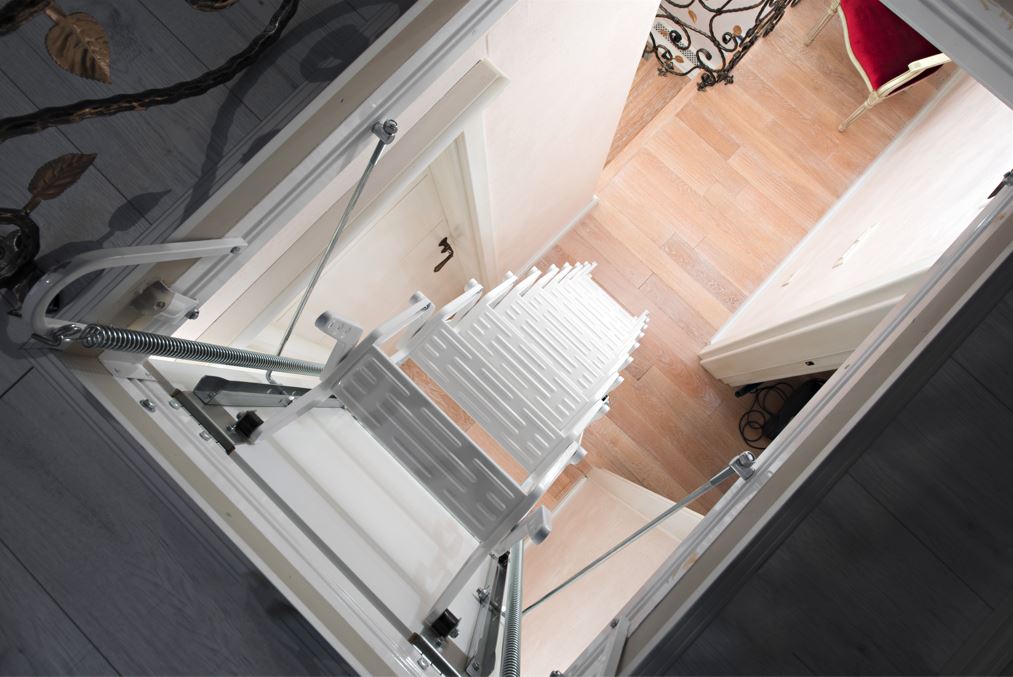
Requirements for an Attic Furnace
The installation of an attic furnace must adhere to either the local mechanical code or the International mechanical code (IMC). The following are some attic furnace requirements that are consistent with most codes in the United States.
The minimum measurements for an attic furnace tunnel are 30 inches high, 22 inches wide, and 20 feet in length. The dimensions must be large enough to remove the largest heating, ventilation, and air conditioning system or furnace appliance put on the roof.

